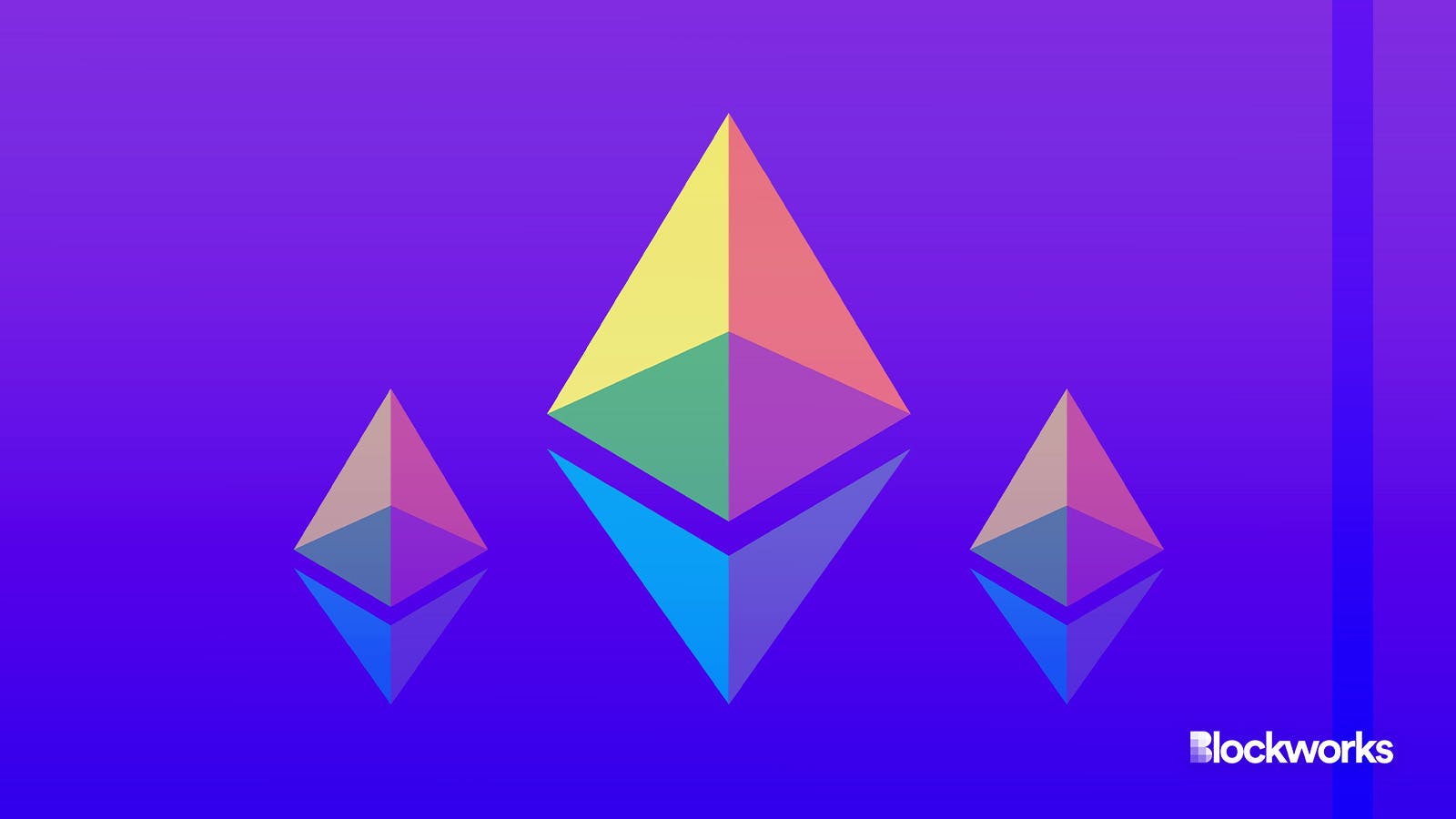Glitch in upgrade of Ethereum Goerli testnet won’t delay Dencun rollout
The EIP-4844 upgrade is alive and well on the Goerli testnet after a rough first few hours

Akif CUBUK/Shutterstock modified by Blockworks
Blobs are live on Goerli.
Ethereum’s Goerli testnet successfully forked to “Dencun,” featuring the “Proto-Danksharding” EIP-4844 innovation.
That paves the way for two more major testnet forks, keeping on schedule, for now, a further move to Ethereum mainnet by the end of March.
The consensus coming out of Thursday’s All Core Devs meeting was to prepare a new software version by mid-next week. This could be used for both the Sepolia and Holesky testnets, slated for Jan. 30 and Feb. 7, respectively.
Dencun’s concept of “blobs” is a key component of the upgrade, and refers to a large piece of data that is not directly included in an Ethereum block but is instead referenced by the block.
By including extra data for transactions, Ethereum will better serve rollups that use mainnet for data availability. Rollups are expected to see around a 90% cost savings, which they will pass on to users in the form of cheaper transactions.
Read more: Dencun and Pralectra: Ethereum core devs chart an ambitious 2024
Even though the data in blobs is stored off-chain, the integrity and availability of this data are still maintained. Blobs are designed to be cryptographically secure, ensuring that the data they reference is immutable and verifiable.
Client diversity wins the day…again
A minor consensus issue in the popular Prysm client caused the forked chain to encounter difficulty finalizing blocks.
Terence Tsao, protocol developer at Offchain Labs, which develops the Prysm client, estimated the resulting delay at about four hours while the team patched the problem.
“When Prysm upgraded from Capella to Deneb state, we kept the historical route empty instead of carrying it over, so this issue was fairly easy to find,” Tsao told colleagues on the ACD call.
The bug didn’t show up in the many Devnets (developer networks) run over the past few months because these are forked from testnets and contain insufficient history to trigger the issue.
“This is one of those very rare edge cases,” Tsao said. “I’m thankful for Goerli, because otherwise we probably wouldn’t have caught it until later.”
Prysm now operates on less than 40% of Ethereum network nodes, so the resulting drop in validating participation rates, if it happened on mainnet, would be bad, but not catastrophic.
In fact, a similar incident occurred in May, showcasing the benefit of client diversity.
Read more: Ethereum devs issue final report on finality SNAFU
Goerli itself is scheduled to be retired following this month. The Ethereum Foundation and other developers have been encouraging users to transition to the newer Sepolia testnet, which will serve as the primary testnet for dapp developers in preparation for Goerli to be shut down.
Another testnet, Holesky, launched in September 2023 and is intended more for infrastructure and protocol development.
Read more: Ethereum’s Holešky testnet launch hits a speed bump
The Prysm bug was the only major client issue observed in the wake of the fork, and one which can be easily avoided in the future according to Danny Ryan, a researcher at the Ethereum Foundation, who nevertheless called it “a failure” that “should be caught way upstream.”
Ryan said he intends to spend some time “making sure there’s nothing else funky on the fork boundary test.”
Client teams expressed no reservations about sticking to the previously outlined release and testnet schedule, pending the results of the next fork in less than two weeks’ time.
Get the news in your inbox. Explore Blockworks newsletters:
- The Breakdown: Decoding crypto and the markets. Daily.
- 0xResearch: Alpha in your inbox. Think like an analyst.






